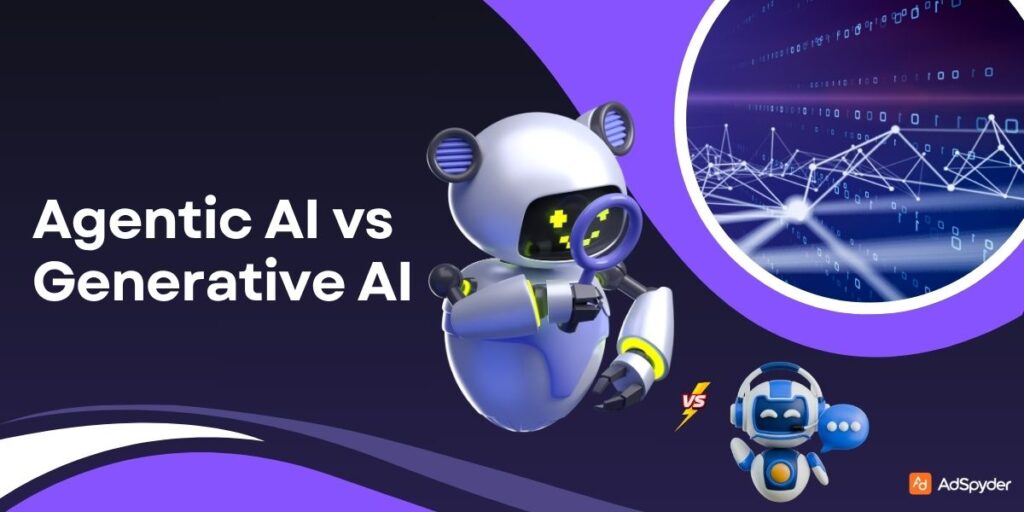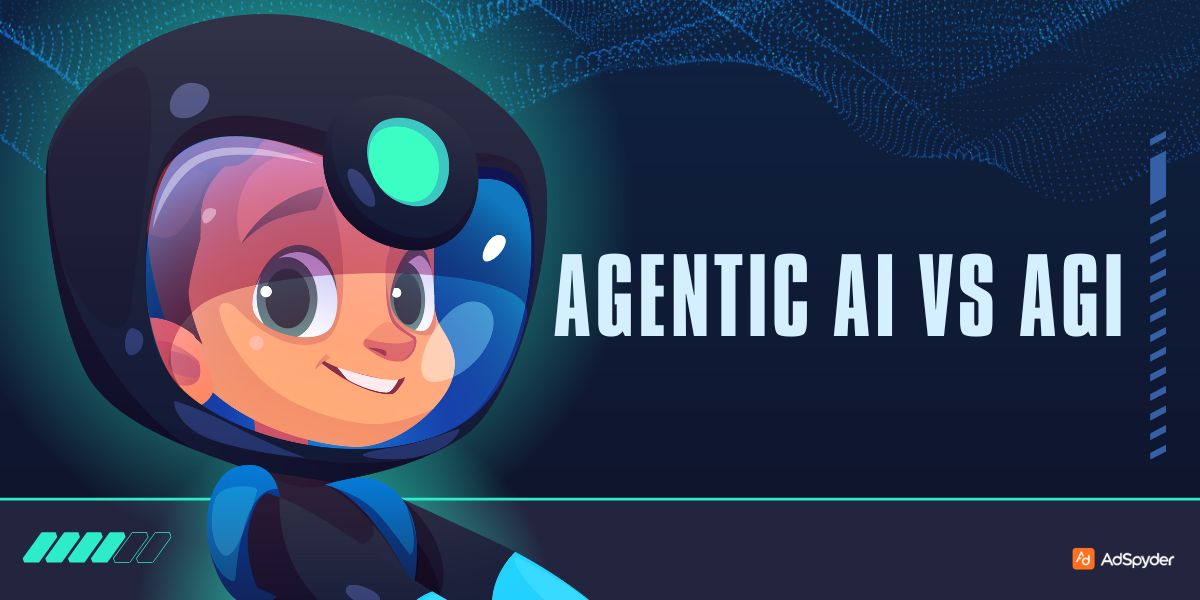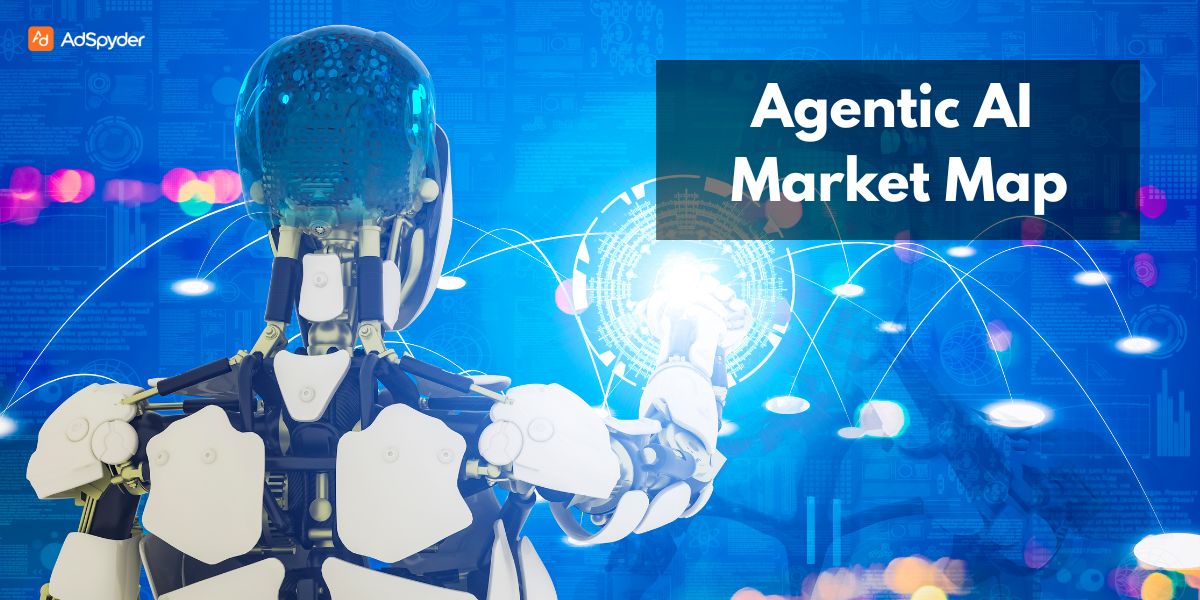In the rapidly growing world of artificial intelligence, two concepts often appear side by side but serve distinctly different purposes: Agentic AI vs Generative AI. While both leverage powerful language models and deep learning techniques, they are not interchangeable. Generative AI is excellent at creating content, but it stops at the output. Agentic AI picks up where generative AI leaves off—turning that output into action through planning, memory, and tool use. In this post, we’ll unpack what sets these two paradigms apart, how they relate, and when to use one over the other.
Ready to Elevate your Marketing Strategy?
What Is Generative AI?
Generative AI refers to models designed to create new content. These models are trained on vast datasets to learn statistical patterns, allowing them to generate text, images, code, and even audio.
Common examples include:
- Text: ChatGPT, Claude, Gemini
- Images: DALL·E, Midjourney, Stable Diffusion
- Code: GitHub Copilot, Code Llama
Key Capabilities:
- Text summarization
- Creative writing or ideation
- Image and media generation
- Code autocompletion or explanation
- Language translation
Generative AI excels at transforming prompts into compelling, structured outputs. But once the content is generated, it requires human input or additional systems to act on that information.
What Is Agentic AI?
Agentic AI is a system architecture that enables autonomy. It uses models like those in generative AI but layers them with components for:
- Goal interpretation
- Multi-step planning
- Tool usage and execution
- Feedback-driven improvement
- Memory and contextual awareness
In short, Agentic AI takes in natural language input, understands intent, creates a plan, selects tools (like APIs or databases), executes actions, and adapts based on results. It is task-oriented, not just output-oriented.
Must See – Agentic AI vs LLMs
The Core Difference: Action vs. Output
| Feature | Generative AI | Agentic AI |
| Primary Role | Create content | Achieve tasks through action |
| Output | Text, code, image | Decisions, workflow execution |
| Planning | None | Multi-step, goal-driven planning |
| Tool Use | No | Yes (APIs, scripts, databases) |
| Memory | Stateless (or limited context) | Stateful, with history and reflection |
| Feedback Loop | None | Built-in (observe → evaluate → adapt) |
Generative AI responds. Agentic AI responds and then does something with it.
Example: Booking a Trip
Let’s say a user enters the prompt:
“Book me a flight to Chicago next Friday and reserve a hotel near the convention center.”
Generative AI Output:
“You can take United flight UA372 at 10:00 AM from JFK. A good hotel is the Hilton Garden Inn at 123 Main Street.”
(Helpful, but passive)
Agentic AI Behavior:
-
- Interprets the request
- Queries a flight booking API
- Filters hotels by location and availability
- Makes the bookings
- Confirms the reservations via email
- Interprets the request
Agentic AI transforms intent into outcome.
Check Out – Agentic AI vs Traditional AI
Do They Work Together?
Absolutely. In fact, Agentic AI is built on top of generative AI. It uses LLMs for:
- Language understanding
- Plan generation
- Decision-making
- Prompt crafting and summarization
But it adds control layers to turn generated content into orchestrated behavior.
You can think of generative AI as the “brain” and Agentic AI as the “brain with hands and memory.”
When to Use Each
| Use Case | Best Fit |
| Writing emails or blog content | Generative AI |
| Summarizing legal documents | Generative AI |
| Automating customer support resolutions | Agentic AI |
| Running multi-step data processing tasks | Agentic AI |
| Creating graphics from a prompt | Generative AI |
| Planning and executing business workflows | Agentic AI |
Final Thoughts
Generative AI has opened up remarkable possibilities for content creation. But real-world productivity and enterprise value often demand more than just intelligent output—they require intelligent action.
That’s where Agentic AI comes in. By combining the linguistic power of generative AI with autonomy, tool integration, and decision-making, it creates systems that don’t just assist humans—they complete tasks for them.
Must See – Agentic AI vs RAG
FAQ
Are Agentic AI vs Generative AI the same thing?
No. Generative AI creates content (text, code, images), while Agentic AI uses that content to plan and perform actions toward specific goals using tools and feedback.
Is Agentic AI built on top of Generative AI?
Yes. Agentic AI uses generative models (like GPT-4 or Claude) as the reasoning engine but adds planning, memory, tool use, and action execution.
Can Generative AI complete tasks autonomously?
Not on its own. Generative AI can suggest or generate outputs, but it doesn’t execute tasks unless paired with orchestration and external tools, as in agentic systems.
What is a good use case for Generative AI?
Writing blog posts, answering questions, generating product descriptions, or producing code snippets based on prompts.
What is a good use case for Agentic AI?
End-to-end task automation—like reading an email, understanding the request, using APIs to resolve the issue, and sending a follow-up message.
Can I combine both in a single system?
Yes. Most agentic AI systems embed generative AI at the core for language understanding and decision-making, then build additional layers for action and memory.
Do I need different infrastructure for Agentic AI?
You’ll need more than just a model endpoint—you also need orchestration tools (like LangGraph), access to APIs, data stores, and logging systems.
Is Agentic AI slower than Generative AI?
It can be, due to the added planning, tool calls, and execution time. But it’s also more powerful in terms of what it can accomplish end-to-end.
Is Agentic AI more expensive to run?
Possibly, since it involves more steps, integrations, and often longer interactions with LLMs, however, it also delivers higher productivity per task.
When should I choose Agentic AI over Generative AI?
Use Agentic AI when you want the system to perform an action, not just respond, especially for tasks that involve tools, APIs, or multiple decision points.




